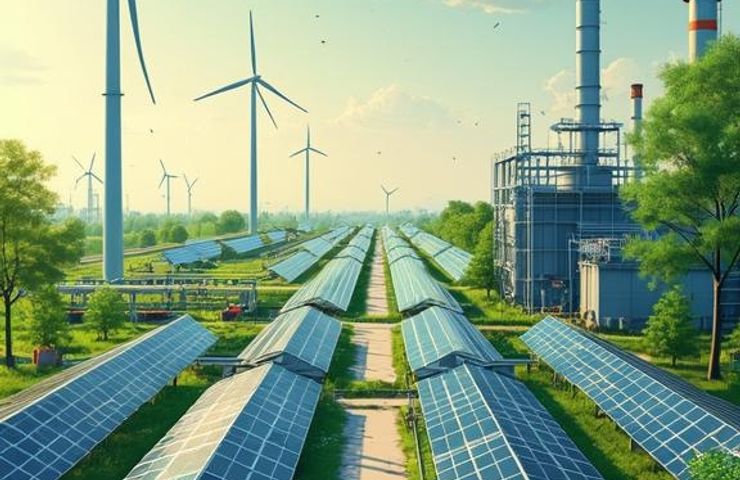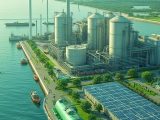
India Allocates 862,000 TPA Capacity for Green Hydrogen Production Under National Mission
August 21, 2025On August 20, 2025, India’s Ministry of New and Renewable Energy (MNRE) rolled out a big new chapter in its National Green Hydrogen Mission. They’ve handed out rights to produce 862,000 tonnes per annum of green hydrogen to 19 home-grown companies, and carved out 3,000 MW of electrolyser manufacturing capacity for 15 others. Announced at the 2025 FICCI Green Hydrogen Summit, this move makes it clear: India is gunning for 10% of the global green hydrogen pie by 2030. It’s not just about slashing emissions on home soil—this sets the stage for robust export ties, especially with EU partners through the India-EU Green Hydrogen Forum.
Key Insights
- India carves out 862,000 tpa of green hydrogen production capacity for 19 firms—a serious scale-up.
- 15 companies get 3,000 MW of electrolyser manufacturing slots to boost local electrolysis tech.
- Goal: 10% of an expected ~100 Mt global green hydrogen market by 2030.
- Policy driven by MNRE and championed by Union Minister Shripad Naik at the FICCI summit.
- Supports industrial decarbonization in tough-to-abate sectors and fortifies sustainable energy supply chains.
- EU-India collaboration ramps up export potential and joint R&D via the India-EU Green Hydrogen Forum.
- India’s renewables base now tops 237 GW as of mid-2025—up from about 160 GW in early 2023.
- Quota system designed to spark private investment and healthy competition in bidding rounds.
- Key challenges: hefty upfront costs, water logistics, infrastructure build-out, and keeping demand in sync.
Historical Context
India’s clean-energy story really took off after the 2070 net-zero pledge. Back in early 2023, MNRE kicked off the National Green Hydrogen Mission to help decarbonize heavy industry and transport—building on rapid solar and wind roll-outs. At that point, India had roughly 160 GW of renewables; fast-forward to mid-2025, and it’s over 237 GW. Along the way, international partners—from the EU to multilateral initiatives—stepped in with summit talks, joint R&D projects, and market-building platforms. That steady momentum set the stage for today’s capacity allocations.
Technical Dive
At the heart of all this is good old electrolysis. Alkaline or proton exchange membrane (PEM) electrolysers split water into hydrogen and oxygen using renewable power. By localizing electrolyser manufacturing, MNRE aims to slash production costs, cut import bills, and shore up supply-chain resilience—a trifecta for affordable hydrogen production.
That 3,000 MW of electrolyser capacity is no small feat. Crank them up, and you could churn out hundreds of thousands of tonnes of hydrogen each year—depending on efficiency and uptime. Pairing these units with India’s 237 GW+ of solar, wind, and hydro means low-cost, zero-emission juice for production. Placing electrolysers close to renewable parks in industrial corridors helps slash transmission losses and optimize water use—though securing enough water in arid spots is still a puzzle.
For context, a 1 MW electrolyser at a 60% capacity factor delivers about 10–12 tonnes of hydrogen daily (roughly 3,500–4,400 tpa). Scale that to gigawatts, and you’re juggling grid integration, heat management, and a just-in-time supply chain for membranes, catalysts, and ultra-pure water treatment. Local manufacturing hubs will need to churn out membrane electrode assemblies, power electronics, and pressure vessels—meeting global specs while keeping costs in check.
Business & Strategic Angle
This capacity allocation sends a crystal-clear signal to investors: India is dead serious about green hydrogen. By earmarking production and manufacturing slots, MNRE essentially lays down an off-take runway—companies know they’ll get access to “green corridors” for power and infrastructure. That kind of policy predictability de-risks big spend on plants and equipment.
For the 19 producers, it means locking in annual quotas averaging around 45,000 tpa—though projects will vary. The 15 electrolyser makers now have concrete targets to set up factories, source catalysts, and ramp up assembly lines. They’ll tap into concessional loans, viability-gap funding, and R&D grants to get going.
On the ground, state agencies in Gujarat, Maharashtra, and Tamil Nadu are lining up land parcels, industrial parks, and port links for faster approvals. Meanwhile, private-equity and global strategic investors are already eyeballing these capacities—signaling that green hydrogen might soon jump from niche pilot to mainstream feedstock.
International offtakers, especially in the EU, are watching closely. India plans to ship surplus hydrogen or derivatives like ammonia, plugging into global decarbonization markets and answering big industrial demand pockets.
Perspective
In my view, India just stamped its ticket as a heavyweight in the low-carbon fuel race. Aiming for 10% of the market puts it alongside Australia and the Gulf states—but at a cost edge thanks to abundant sun and space. Of course, the rubber meets the road in execution: building 3,000 MW of electrolysers plus water treatment, pipeline networks, and storage won’t happen overnight.
Cost is still the elephant in the room. Today, green hydrogen often trades at a premium versus grey or blue variants. MNRE is banking on renewable tariffs continuing their downward slide and manufacturing scale-ups closing the gap. Early projects will lean heavily on subsidies or viability-gap funding, but over time we could see clever “hybrid” models mixing grid and renewables to juice utilization rates.
Expect the first wave of these plants to flip the switch between 2026 and 2028, in step with new solar and wind farms coming online. Beyond pure hydrogen, look out for green ammonia and methanol—they offer steadier off-take since ammonia logistics are already well-trodden.
Water in arid zones and grid hookups in remote corridors remain hurdles. It’s promising that MNRE is eyeing industrial/export lanes, but state-level coordination on land, water, and transmission will make or break timelines. On the plus side, local job creation in manufacturing and operations could be a major boon, spreading economic benefits far beyond the energy sector.
Finally, international partnerships like the EU-India Green Hydrogen Forum will be game-changers. Joint R&D, tech transfer, and co-investment consortia can compress learning curves—blending Indian manufacturing grit with EU financing muscle and off-take guarantees.
Closing Insight
This capacity allocation is more than numbers on paper—it’s a real litmus test for India’s policy chops. If MNRE’s targets translate into humming plants and actual exports, it could redraw the global map for green hydrogen. Keep an eye on this space—it’s where sustainable energy ambitions meet hard-nosed execution.



 With over 15 years of reporting hydrogen news, we are your premier source for the latest updates and insights in hydrogen and renewable energy.
With over 15 years of reporting hydrogen news, we are your premier source for the latest updates and insights in hydrogen and renewable energy.